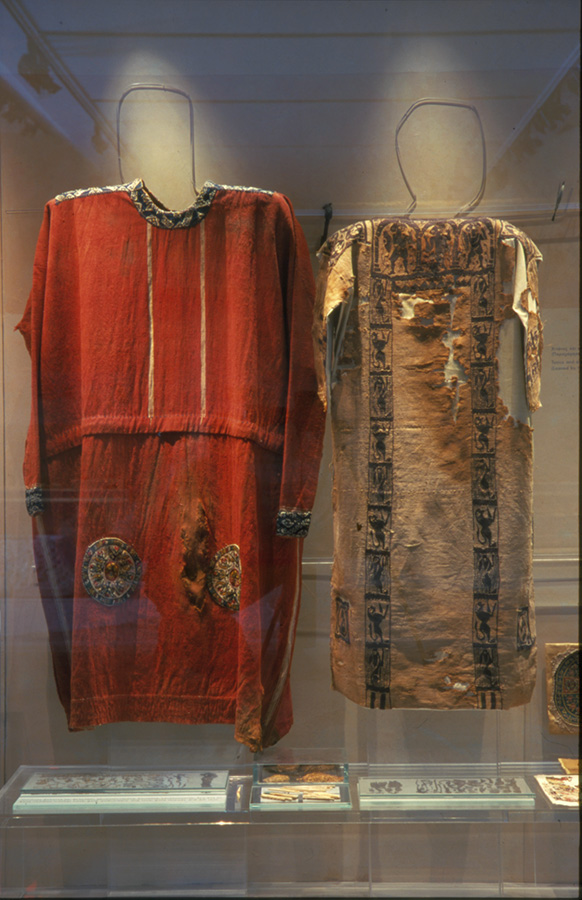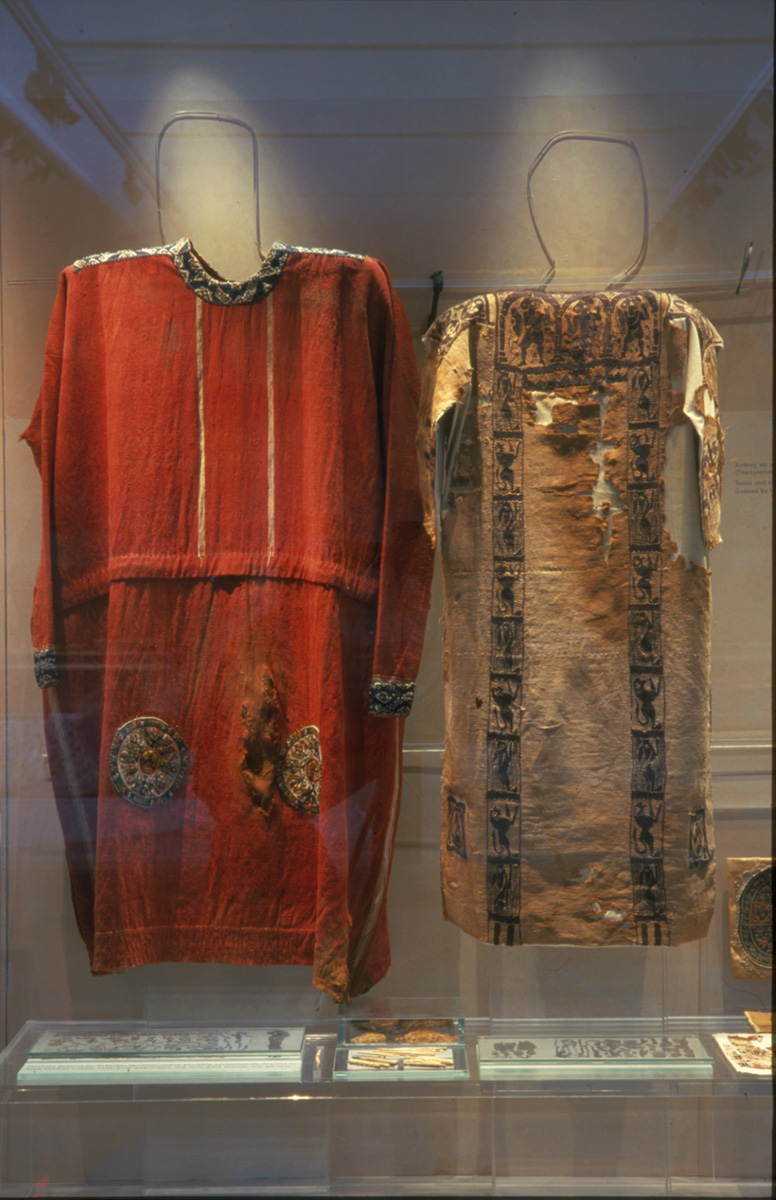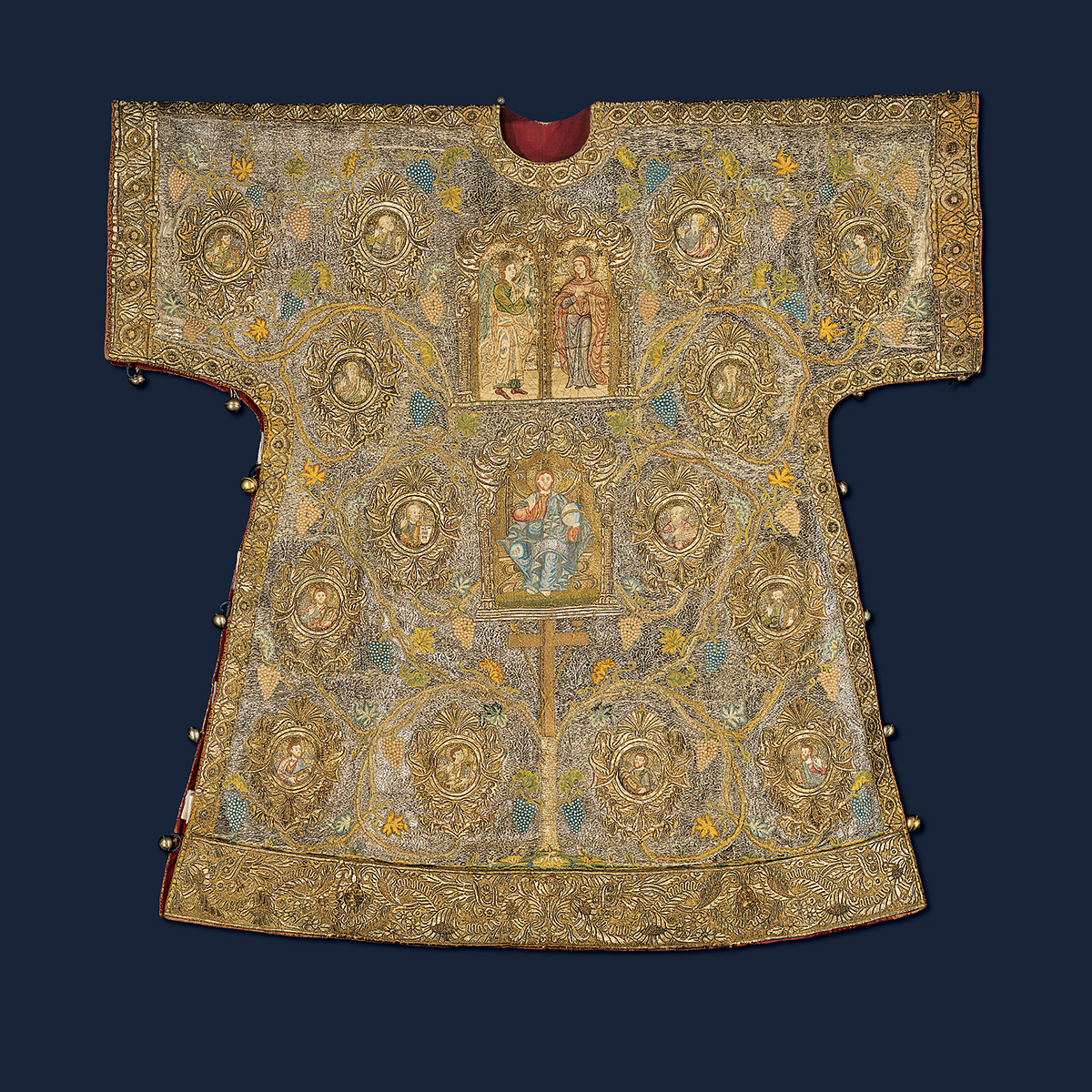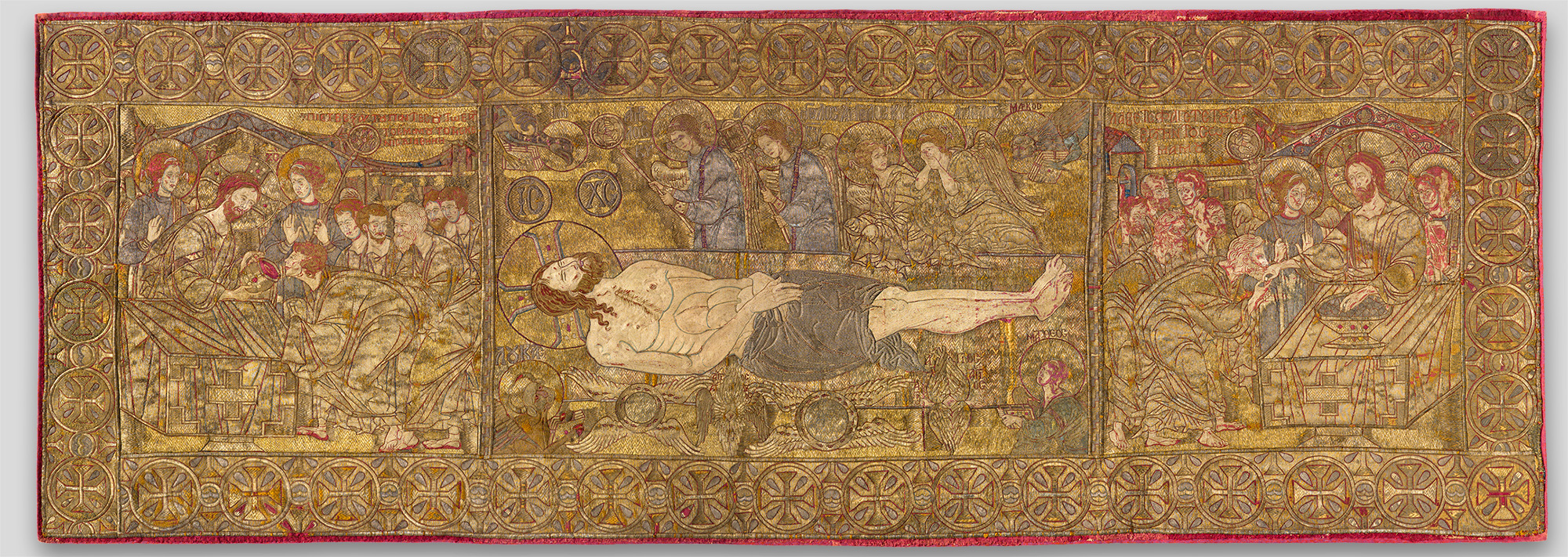Textiles
The small in absolute numbers textile collection of the Museum of Byzantine Culture is in fact very remarkable both because of the uniqueness of some of its objects and their diversity, but also because it extends from the 4th to early 19th c. covering the entire Byzantine and Post-Byzantine era.
In galleries 2 and 3 a group of very rare gold lace and other gold-embroidered and gold-woven fragments of textiles, which have been found in tombs excavated in Thessaloniki and date to the 4th AD c., impresses with its elegance and wealth.
In gallery 2 a woolen and a linen tunics are displayed, which date to the 5th-7th c. These tunics from Egypt are a permanent loan from the Benaki Museum. From that country we have enough samples of weaving of the Early Christian period (4th-7th c.) because its dry climate helped their preservation. Remarkably, tunics in that period of time were the most prevalent type of clothing for men and women of all social strata.
The Museum has also (gallery 4) a small piece of a gold-woven silk garment of the 11th c., which is decorated with rows of tangential roundels filled with birds. Precious garments with such a decoration is believed that they belonged to officials.
The permanent exhibition of the Museum also hosts liturgical textiles and vestments. The gold-embroidered silk epitaphios (gallery 7), which comes from a Thessaloniki workshop, is a unique and important work both for its art and its technique (dated around 1300).
The gold-embroidered silk sakkos, made for Bishop Ioannikios of Melnik (gallery 10), stands out among the vestments of the Museum. It is a fine example of 18th century embroidery, work of the famous designer Christoforos Zefar.
A gold-embroidered silk epimanikion, donated by Carrefour Marinopoulos S.A., which was made for Bishop of Thessaloniki Gerasimos the Cretan (1788-1810), is also exhibited in gallery 10. In a rare depiction the bishop is shown in front of the city of Thessaloniki be blessed by St. Demetrius.






